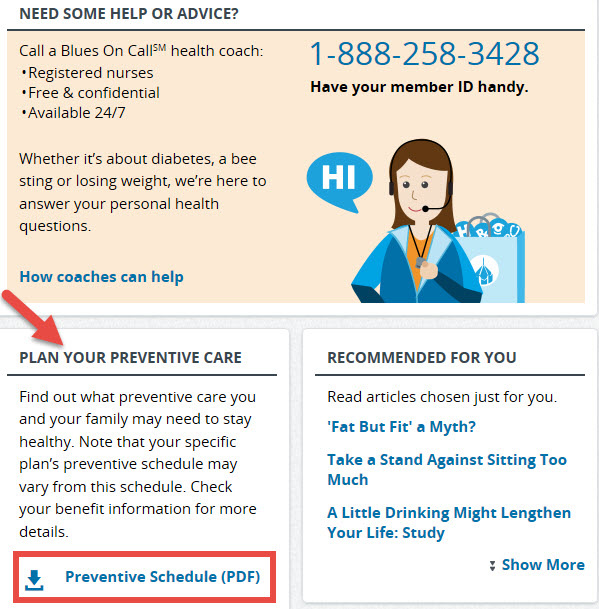It’s a common, and understandably frustrating, problem that many of us have experienced: After a medical procedure that you were sure your health plan covered 100%, you get a bill. Why did this happen, and what can be done about it?

Customer advocate Wendy Fabin.
Wendy Fabin, a Highmark customer advocate, answers those questions every day. In fact, it was her idea to do a blog article about common reasons that a procedure which is covered 100% or involves a small co-pay might lead to additional procedures — and charges. Since she has also earned her Certified Coding Associate (CCA) designation, she turned out to be the perfect person to talk with on the subject.
Don Bertschman (DB): Thank you for suggesting this and taking time to share your knowledge. Your idea for this article came from noticing confusion around colonoscopies. My plan covers this 100% as a preventive screening at my age, so…why would I get a bill?
Wendy Fabin (WF): The thing to remember is that you’re covered for a screening under your routine preventive benefits — a colonoscopy screening is a procedure to see if there are any issues, like polyps, or confirm that everything is ok. But not every colonoscopy is a routine preventive procedure; if your doctor saw something in your blood work and sent you to have a colonoscopy as a result, that’s then a diagnostic procedure, which falls on the medical side of your benefits. The same would be true if they found something during a screening and, as a result, needed you to come back for a second colonoscopy six months later. And depending on your plan, you may be responsible for a deductible or co-pay related to diagnostic procedures.
DB: You made a distinction between routine, preventive benefits and medical benefits — how does a member know which is which?

To find your preventive schedule, log in to your member website, click on the “Wellness” tab, then scroll down the page looking for the section on preventive care.
WF: Routine benefits are all the preventive parts of maintaining health, like your annual wellness exam, yearly immunizations such as pneumonia and flu vaccines, and scheduled screenings. If a problem has to be diagnosed or treated, that’s the medical side.
If you’re a Highmark health plan member and register on your member website, you’ll have access there to your routine preventive schedule. That shows you what’s covered as routine — including the colonoscopy, or, for women, the routine annual gynecological exam and, once you’re over 40, the routine annual mammogram. Everything on your preventive schedule will be covered, in most plans, at 100 percent of the allowed amount.
DB: What other procedures cause this confusion for health plan members where there may be unanticipated costs?
WF: Well, any screening — what’s covered as routine is the screening, not additional testing or procedures that may need to be done because of what is found during the screening. There could also be cases where your doctor decides to do a separate procedure at the same time as your screening. For example, a doctor may want to perform an upper GI endoscopy while you’re under anesthesia for your colonoscopy screening. There’s nothing wrong with that — you just need to be aware that only the screening procedure is covered under your preventive benefits, and the endoscopy may incur out-of-pocket costs for you depending on your coverage.
Urgent care is another one. Let’s say you have a sore throat and go to an urgent care facility. If your plan has a $25 co-pay for urgent care visits, you need to remember that’s only the visit; if they do a throat culture or blood work, those will be diagnostic procedures billed in addition to the visit. And, on the insurance side, they’re not covered under the $25 co-pay, they’re covered under your diagnostic benefits.
It’s never a bad idea for the member to call member service to make sure they understand what’s covered before scheduling a procedure. We try to educate members as much as possible so they can make informed decisions.
DB: That’s a good tip. Many people might assume the doctor will tell us what something will cost or if they’re adding something to a routine visit or screening that we’ll have to pay extra for.
WF: Most providers put it on the patient to understand their insurance coverage. To be fair to doctors, there are so many different types of benefits, and people may be at different places with their deductible, so it would be hard for the doctor to figure this out for every individual. And — this is your health, your finances, so in that respect it makes sense that you should be the one getting the information you need to make your own decisions.

DB: Focusing on the practical — what can a health plan member know or do to avoid the health equivalent of “buyer’s remorse”?
WF: We always want people to do what’s right for their health — period — including getting cancer screenings. But with screenings and many other procedures, you also have some choices. If your doctor says something isn’t urgent, then take the time to do a little research, including calling member service, so you understand potential costs and can manage your budget accordingly. Any time you are going to get a procedure done in the future, we advise asking your doctor’s office for the billing codes — that allows us to check the benefits with greater confidence because we know how the claim will come in.
DB: Could you give us a little background on those billing codes?
WF: Sure, with any claim sent to your insurer, two codes will be submitted: a procedure code and a diagnosis code. The procedure code is “what” was done; the diagnosis code is “why” it was done. The procedure code tells us where to look in your benefits to see whether you have coverage and what costs you might be responsible for under your plan. Some things are diagnostic-specific — in other words, a procedure may be covered under one diagnosis code but not another.
The more information we have, the better we can tell the member what the coverage situation is. We can’t guarantee what a member may have to pay, because there are so many extenuating circumstances between our conversation on the phone and them going to the doctor and the claim being submitted, but we can at least give them a better idea of what to expect.
This works in the other direction too — we can let you know if there are questions you should ask your doctor. For example, if you go in for a routine physical and your doctor wants to have blood work done, then you want to ask: is this the routine blood work like a glucose screening and lipid profile, or are you adding something with a diagnostic code, which may involve cost issues I want to know about?
More generally, when you go in for a routine exam, that’s a specific procedure and diagnosis code. If you show the doctor a wart on your thumb, and she looks at it and uses frozen nitrogen to remove it, now you’ve gone from a routine office visit procedure code and diagnosis code, into a diagnostic office visit and wart removal, which are additional codes, and you may be responsible for costs under your health plan.
Just to be clear, that’s not the doctor’s choice to code it differently, and it’s not the insurer’s choice. There are billing guidelines that the biller and coder have to follow, and then we take the claims as the doctor sends them in and process each one according to the benefits.
DB: So, the codes aren’t arbitrary — we all play by the same rules?
WF: Yes, the codes are provided by the American Medical Association and updated annually. There are books with guidelines — a procedure code book, a diagnosis code book, and an in-patient hospital coding book. Medical coders and billers go through specialized medical training in anatomy and physiology to be able to understand these guidelines, and they are very strict in following the guidelines.
DB: Does it make sense for a member to raise a flag if they think there may be a coding error? Do we ever go back to a doctor and question whether the right code was used?
WF: We do, but we never lay blame. If we’re taking a call before a procedure happens, then we’re giving the member the information they need to talk with their doctor and understand any costs. With a routine physical exam and routine lab work, for example, if the doctor wants to add a liver function test or kidney profile, we let the member know those aren’t on the preventive schedule, so they can have that conversation with the doctor. Lab work is an area where plans may differ — certain blood tests may be listed under routine benefits on one plan but not on another. So again, we can help clarify for you what is covered under routine and what isn’t for your specific plan.
In terms of a rejected claim, if a member gets an explanation of benefits (EOB) letter with a denial of coverage and they’re going to owe money, it’s understandable that they might be panicking. But normally I say the best thing to do is to wait until you get the actual bill. With the bill in hand it’s easier for me as the advocate to call that billing office and talk to them for that member. I have no problem calling the billing office to ask questions and go over information. In many cases, they’ll send it back for review and put the account on hold for 30 days while the review happens. In the meantime, sometimes it also makes sense to call the doctor’s office. If a doctor ordered blood work and a member went to an outside facility, there are cases where it does come down to the doctor calling and telling that facility, “no, it should be this diagnostic code instead of that one,” and then they resubmit the claim with the new code.
DB: You’ve been in the health insurance industry for four and a half years, you studied and earned your CCA in medical billing and coding, and you’re also a health plan member and patient, a parent. Seeing the nation’s health care system from many different sides, what do you think would make that system work better?
WF: We need people to have a better understanding of their benefits and know that not everything is going to fall under those benefits. I try to educate — I really believe in the value of insurance education. Insurance can be confusing and feel overwhelming sometimes — so I never mind taking time to make sure a member understands what they need to before we hang up. That’s always my personal goal. And I’d like to see the system improve to help everyone understand what their insurance encompasses and what it doesn’t.